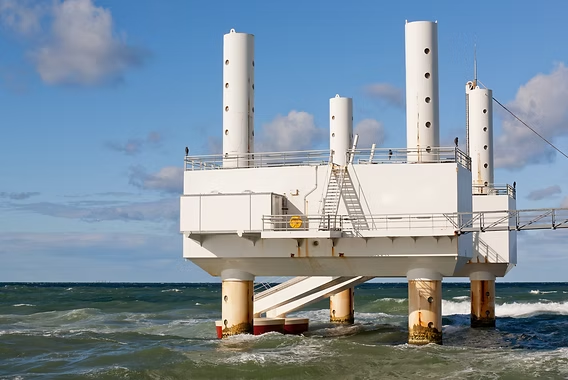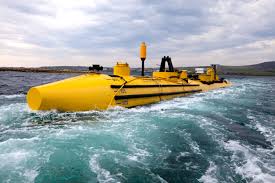
Wave Power’s Potential Role in the Energy Future
July 18, 2025 UncategorizedWave energy—harnessing the ocean’s kinetic power—holds great promise as a clean, predictable energy source. Despite being underdeveloped compared to wind and solar, wave power could become a powerful contributor to the future energy mix. Here’s how it stacks up:
Why Wave Energy Matters

- Highly reliable & predictable
Waves exist nearly 24/7 and carry higher energy density than wind or solar, making wave energy a strong candidate for reducing intermittency in renewable generation. - Complementary to wind & solar
Co-locating wave energy devices with offshore wind farms can boost total output by 2–4× without significantly raising infrastructure costs. - Massive global potential
According to the IEA and academic studies, wave energy could eventually produce tens of thousands of TWh per year—enough to supply a meaningful portion of global electricity demand.
Market Outlook & Emerging Economics
- Global capacity is growing
As of now, global wave energy capacity remains low (~26 MW). But projections indicate growth to up to ~32 GW by 2050. - Cost competitiveness on the horizon
Cost studies forecast that wave energy could reach < €100/MWh by the early 2030s, and < €50/MWh by 2050, making it competitive with offshore wind. - Policy momentum in Europe & beyond
The EU aims for 1 GW of installed ocean (wave + tidal) energy by 2030 and 40 GW by 2050, targeting around 10% of total electricity from ocean energy by mid-century. Similar strategies are emerging in the U.S., U.K., and India. - Private investment accelerating
Swedish firm CorPower Ocean, among others, continues to attract funding. It has secured over €118M from investors including Tokyo Gas and GTT Strategic Ventures to scale demonstration projects.
Real-World Deployment & Use Cases

- Test projects and pilots
- Gibraltar Wave Farm is Europe’s first commercial wave plant, currently delivering ~100 kW with expansion in progress.
- Mutriku Breakwater in Spain uses oscillating water columns with ~296 kW capacity.
- MARMOK-A-5 buoy in Spain contributes 30 kW to grid testing efforts.
- Integration with grid infrastructure
In Oregon, a large wave energy test site is set to connect to the U.S. grid, with support from a $112M federal investment to advance marine energy technologies.
🔧 Key Challenges to Scale
| Challenge | Overview |
|---|---|
| High upfront CapEx | Prototype devices and marine-grade installations remain costlier than mature technologies. |
| Harsh marine climate | Saltwater corrosion, storm damage, and device survival are serious engineering hurdles. |
| Environmental concerns | Possible impacts on marine ecosystems need careful study and mitigation. |
| Grid integration & storage | Wave output variability (seasonal and storm driven) requires storage or hybrid systems to fully utilize. |
What Lies Ahead?
Wave energy stands at the edge of mainstream viability. With ongoing R&D, falling costs, and coordinated deployment, it could become a core pillar of coastal renewable energy systems by 2050—supporting both national energy targets and global net-zero goals.
- Near term (2025–2035): Pilot and early commercial wave farms; gradual cost reduction trends
- Mid-term (2035–2050): ~30–40 GW global capacity; wave energy delivering ~10% of electricity in high-resource regions
- Long-term (2050+): Wave installations as standard with offshore wind and solar in hybrid systems
Wave power alone may not solve global energy needs—but alongside well-developed solar, wind, storage, and grid support, it has the potential to be a consistent, reliable, and environmentally clean source of electricity for coastal communities.
